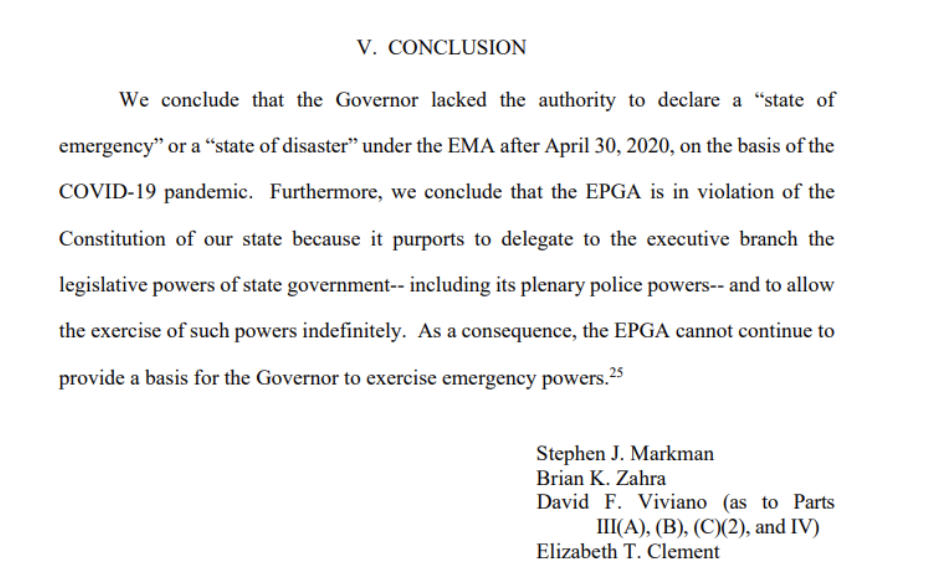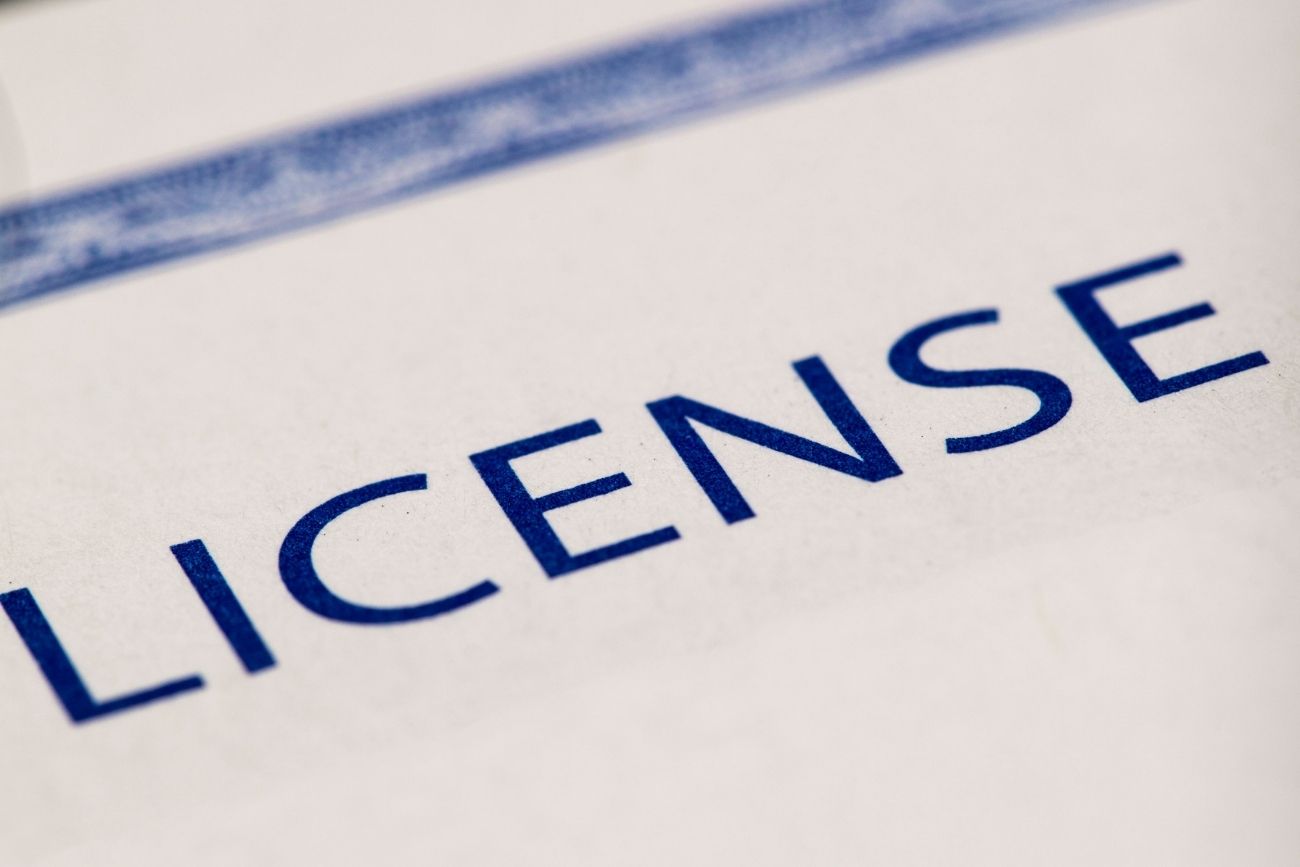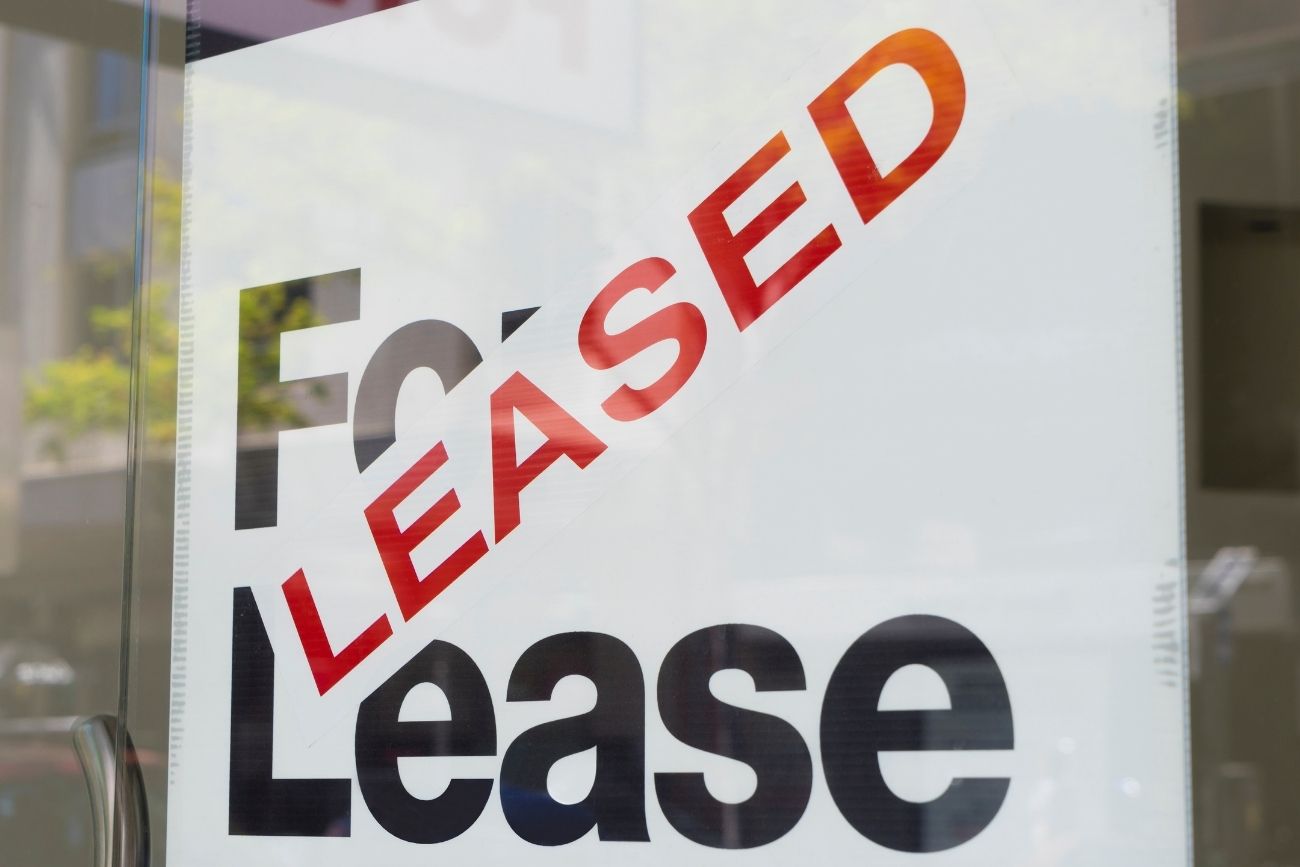The Michigan Supreme Court Has Ruled That Governor Gretchen Whitmer Exceeded Her Powers During Coronavirus Pandemic
‘Michigan Is Now Unlocked’: State Supreme Court Strikes Down Emergency Powers Law
Background
The Michigan Supreme Court on Friday struck down a 1945 law that Gov. Gretchen Whitmer (D) has been using to keep the state locked down since April.
Michigan’s Emergency Management Act of 1976 allows the governor to declare a State of Emergency for up to 28 days without input from the Legislature, but approval from lawmakers is required after that.In a split 4-3 ruling, the majority opinion of justices says Whitmer lost the authority to continue a State of Emergency for the coronavirus pandemic after April 30, when the Michigan Legislature declined to extend it.

Whitmer initially declared a State of Emergency for coronavirus in March, when the illness began spreading widely in Michigan. The Legislature approved an extension of the emergency from April 1 to 30, but declined another extension beyond April 30
Michigan’s Emergency Management Act of 1976 allows the governor to declare a State of Emergency for up to 28 days without input from the Legislature, but approval from lawmakers is required after that. Whitmer invoked the 1945 Emergency Powers of the Governor Act after April 30 to continue the State the Emergency and issue dozens more executive orders increasing and decreasing restrictions to prevent the spread of coronavirus without legislative approval.
The Republican-led Legislature had criticized Whitmer’s actions keeping businesses closed and maintaining restrictions on residents during the coronavirus pandemic. The Legislature filed a lawsuit in May challenging her authority under the 1945 law.
The Michigan Court of Claims and Michigan Court of Appeals both ruled in Whitmer’s favor and allowed her orders to continue. However, the Supreme Court ruled that the 1945 law constitutes an unconstitutional delegation of lawmaking authority from the Legislative to the Executive branch of state government. Based on that, the court ruled that all of Whitmer’s coronavirus orders after April 30 “lack any basis under Michigan law.”
Following the Court’s Order, Whitmer could have simply terminated her executive orders. She could easily have recognized that her executive orders had infringed on legislative functions. Instead, Whitmer called the Supreme Court ruling “deeply disappointing” and said she “vehemently disagrees” with the Court’s interpretation of the Michigan Constitution. She said it eventually will leave Michigan as the only state without some form of an emergency declaration in place while coronavirus continues spreading, especially in the Upper Peninsula.
“I know this is hard. We all want this crisis to be over, and we all want life to return to normal as soon as possible,” Whitmer said in a statement. “But the only way we will get through this is by pulling together as Americans and working as one nation to defeat this virus. That means wearing a mask, washing your hands frequently, and maintaining six feet of physical distancing. Michiganders have grit, and there is no challenge we can’t meet.”
Governor Whitmer pointed out her orders will remain in place for 21 more days until the Supreme Court ruling takes effect. After that, she said many of the orders will remain in place under “alternative sources of authority that were not at issue in today’s ruling.”
Whitmer pledged to continue working on behalf of Michiganders to prevent the spread of coronavirus. “I want the people of Michigan to know that no matter what happens, I will never stop fighting to keep you and your families safe from this deadly virus,” she said.
Perspective
Michigan is not alone. Governors of many states quickly opted to exercise unwarranted political powers. Too many Governors did.
We all went along with it because Covid-19 was new, and the projections we were being sold were frightening. A few months ago we wrote about the flatten-the-curve" bait and switch that occurred following the panic of Covid-19 in the spring of this year:
The media, together with our elected officials as if in lockstep, told us we had to shut down the schools, our businesses, and pretty much restrict our social assemblies including church and small gatherings. This was necessary to “flatten the curve.”
By following these instructions ("orders") we could expect to slow the spread of coronavirus. This was greatly important! At the time we were told that “the virus could not be stopped, however it could be managed.” The alternative was bleak. If the virus were to spread unchecked, hospitals would be overwhelmed and both people with coronavirus and those needing medical attention for other ailments would die from the lack of access to care.
As citizens we grappled with frightening scenarios as the media peppered us with graphics that depicted flattening the curve, such as in The New York Times. These and other similar graphs typically showed two curves. One of them represented the spread of Covid-19 without lockdowns. This curve peaked well above the capacity of the health-care system. The second, “flattened” curve was as comforting as it was compelling. It associated lockdowns with a peak hovering near capacity. The areas under each curve, representing the total number of Covid-19 infections, were roughly equal. Many of us trusted government to act responsibly. Not all of them have. Clearly, the constitutionality of these various executive orders were ignored.
For autocrats, and others, coronavirus offered a chance to grab even more power. Leaders around the world, and in local communities, passed emergency decrees and legislation expanding their reach during the pandemic. Sadly, it took several months and an appeal to the Supreme Court of Michigan to resolve the issue in that state. One can only hope that other executive bodies, from state Governors to county and municipal leaders are paying attention to this decision.




